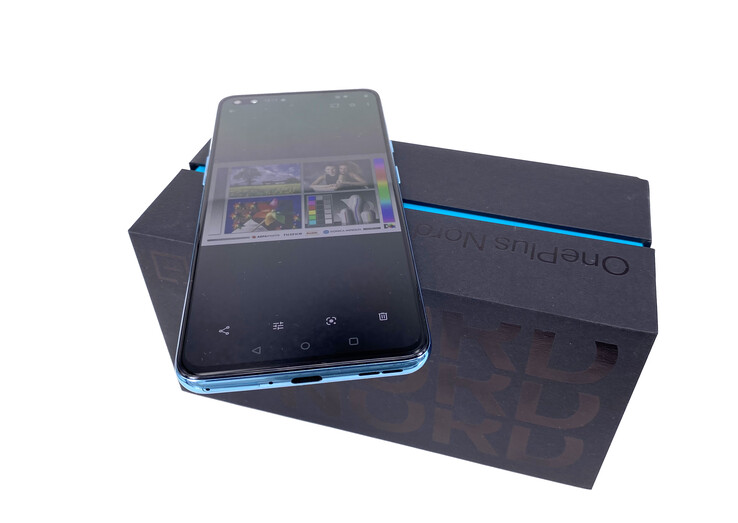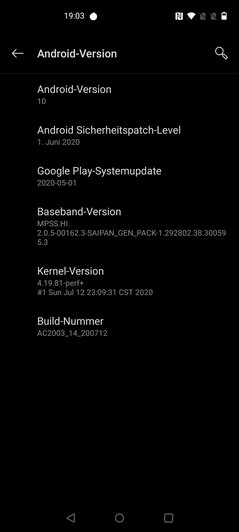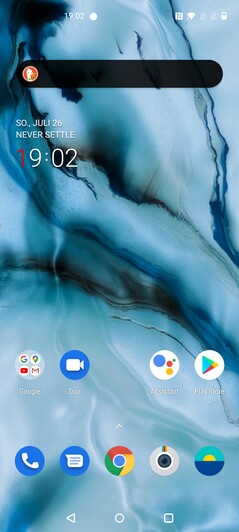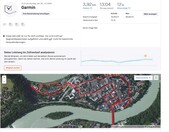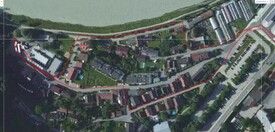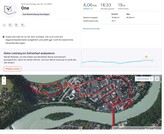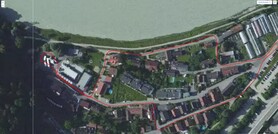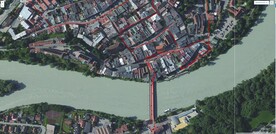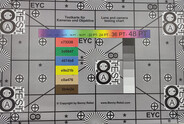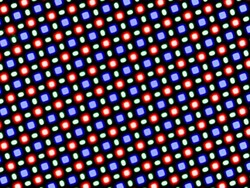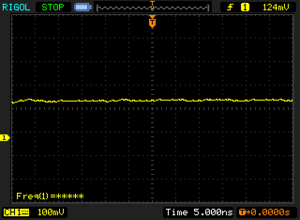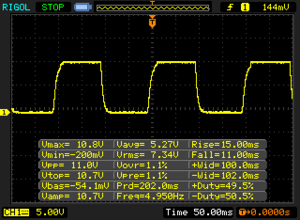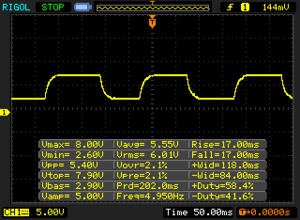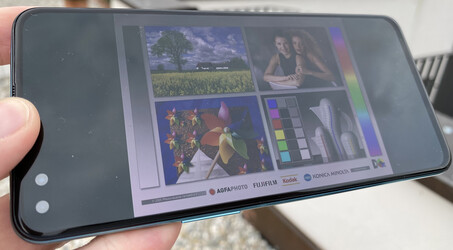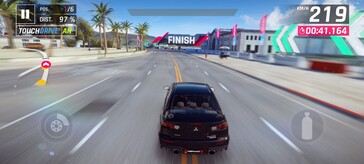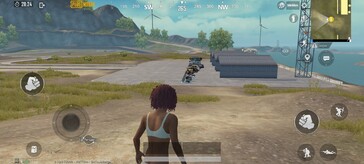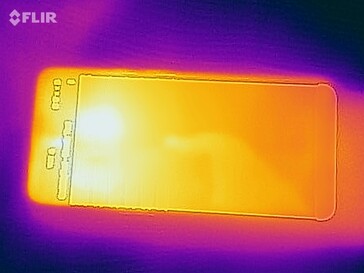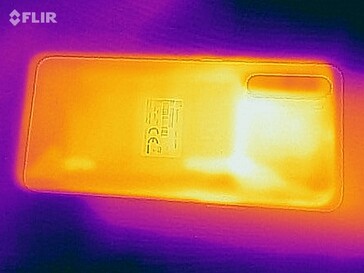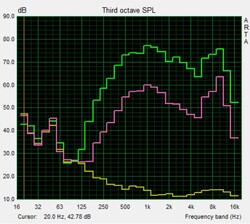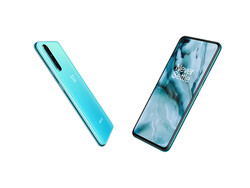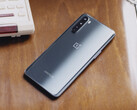OnePlus Nord Smartphone Review – Comeback of the Value Champion?
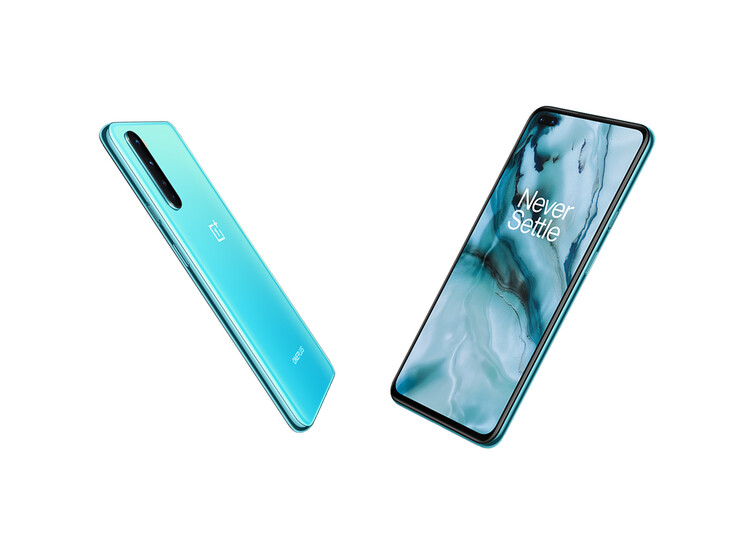
It all began five years ago: Back then, a small Chinese manufacturer called OnePlus offered a smartphone with a top-of-the-line processor, high-resolution display, a lot of internal storage and a decent camera for just 299 Euros (~$350). The OnePlus One continues to be a milestone to this day because it proved that great technology does not have to be expensive.
Now, OnePlus is trying to repeat this historic feat and challenge premium manufacturers with the OnePlus Nord. But wait, hasn't OnePlus itself reached prices just shy of the 1,000-Euro/$1,000 threshold with its devices now? This is one more reason why the OnePlus Nord has to be a success to satisfy the manufacturer's original fans.
To start things off, the pricing is very competitive: Starting from 399 Euros (~$470), the device is supposed to keep up with competing flagships. In our test we will take a closer look to see whether OnePlus has managed to write smartphone history again.
Competing Devices
Rating | Date | Model | Weight | Drive | Size | Resolution | Price |
|---|---|---|---|---|---|---|---|
| 83.6 % v7 (old) | 07 / 2020 | OnePlus Nord SD 765G, Adreno 620 | 184 g | 256 GB UFS 2.1 Flash | 6.44" | 2440x1080 | |
| 85.2 % v7 (old) | 05 / 2020 | Apple iPhone SE 2020 A13 Bionic, A13 Bionic GPU | 148 g | 128 GB NVMe | 4.70" | 1334x750 | |
| 82.3 % v7 (old) | 07 / 2020 | Huawei P40 Lite 5G Kirin 820, Mali-G57 MP6 | 189 g | 128 GB UFS 2.1 Flash | 6.50" | 2400x1080 | |
| 86 % v7 (old) | 02 / 2020 | Samsung Galaxy S10 Lite SD 855, Adreno 640 | 186 g | 128 GB UFS 3.0 Flash | 6.70" | 2400x1080 | |
| 83.3 % v7 (old) | 12 / 2019 | Xiaomi Mi Note 10 SD 730G, Adreno 618 | 208 g | 128 GB UFS 2.0 Flash | 6.47" | 2340x1080 |
Case – Gorilla Glass 5 for the OnePlus Nord
The front and back are covered by Gorilla Glass 5 and the frame is made of plastic. As a result, the OnePlus Nord offers a shiny back with a robust, premium appearance, although it does make it fairly susceptible to fingerprints. The two color variants are Blue Marble, a rich light blue, and Gray Onyx, a subtle, silver gray.
With a 6.44-inch display and narrow bezels, the OnePlus Nord is a medium-sized smartphone and likely too large for users with very small hands. At 184 grams (~6.49 oz), it is not particularly heavy. The smartphone looks very compact, well-made, and it barely yields under pressure, while entirely resisting twisting attempts.
There is no IP certification, which is still exclusive to the OnePlus 8 Pro. However, OnePlus has emphasized that all of its smartphones have an identical protection against humidity and splash water should not be an issue. Users should not submerge any of the devices though, since water damage is not covered by the warranty.
Features – Lots of Storage for a Cheap Price
The OnePlus Nord is available in the following memory configurations:
- 8 GB RAM/128 GB internal storage: 399 Euros (~$470)
- 12 GB RAM/256 GB internal storage: 499 Euros (~$590)
Thanks to UFS 2.1, the internal storage is quite fast and the capacity is relatively large for the price. Expanding the storage via a microSD card is not possible on any of OnePlus' devices and the Nord does not offer this option, either.
Internally, the USB-C port is only connected to a USB 2.0 interface. NFC is available for mobile payments as well as other applications and the latest Bluetooth version 5.1 is supported.
Software – OxygenOS Feels Smooth
OnePlus has preinstalled its own Oxygen OS, which is based on Android 10, on the inexpensive smartphone. At the time of writing, the security patches are still up to date. As per usual, the manufacturer promises two operating system version updates and three years of security patches for its smartphone.
The OnePlus software is modern, responsive and it offers all the latest Android features. There are only a few preinstalled apps, for example social-networking apps, which can be quickly uninstalled.
Communication and GPS – Quick without Wi-Fi 6
While the Wi-Fi support is limited to Wi-Fi 5, this is more than reasonable considering the price point of the Nord and the fact that the smartphone achieves very fast transfer speeds in our standardized Wi-Fi test with our reference router Netgear Nighthawk AX12, where it outperforms all Android competitors. In practice, the Wi-Fi is very quick and reliable.
Since a wide range of LTE frequencies is supported, users will be able to connect to LTE networks in the vast majority of countries. There is even 5G support, which is still relatively rare for moderately priced devices. In our short test, the LTE reception in an urban area was good.
| Networking | |
| iperf3 transmit AX12 | |
| Apple iPhone SE 2020 | |
| OnePlus Nord | |
| Xiaomi Mi Note 10 | |
| Samsung Galaxy S10 Lite | |
| Huawei P40 Lite 5G | |
| iperf3 receive AX12 | |
| OnePlus Nord | |
| Apple iPhone SE 2020 | |
| Samsung Galaxy S10 Lite | |
| Huawei P40 Lite 5G | |
| Xiaomi Mi Note 10 | |
Outdoors, the smartphone is able to quickly locate us with an accuracy of within slightly above three meters. In order to achieve this, it can access various satellite systems including the American GPS, Russian GLONASS, Chinese BeiDou and the European Galileo network. Other satellite systems in Japan and India are supported as well.
In very narrow alleys on our customary bike ride, there are occasional, small gaps in the route recorded by the OnePlus Nord. However, it still produces excellent results overall, making OnePlus' cheap smartphone a good choice for navigation tasks.
Telephony and Call Quality – Clear Speech
OnePlus uses Google's default telephony app, which should be fairly intuitive to use and familiar to most people who have previously owned an Android device. The OnePlus Nord also supports VoLTE and Wi-Fi calling.
The sound quality of the integrated earpiece is excellent and the volume of our conversational partner can be increased to fairly high levels without introducing static or adversely affecting the clarity. Although the microphone captures our voice relatively clearly, it makes us sound somewhat distant and very loud voices quickly become distorted. While our conversational partner still sounds distinct in hands-free mode, we have to make sure not to speak too quietly. While on speakerphone, our voice also sounds fairly distant.
Cameras – OnePlus Nord with Flexible Cameras
On the back of the OnePlus Nord, there are four camera lenses. The main camera has a resolution of 48 megapixels. The full resolution is only available in a specific mode, whereas the camera ordinarily combines four pixels into one in order to achieve a higher light yield. Thus, to keep the storage requirements at a far more reasonable level, the typical resolution of a picture is 12 megapixels, which is more than enough for most situations.
Pictures captured with the main camera impress with relatively well-saturated colors, although pictures taken with the iPhone 11 Pro Max are even more vibrant and more detailed. For a mid-range smartphone, the OnePlus Nord's pictures are still sharp and fine structures still remain discernible when zooming into the picture. The main optics even comes with an optical image stabilizer. Meanwhile, smaller details in our landscape shot are not quite as sharp as they could be, and while the same holds true for the image captured with the wide-angle lens, the distortion correction works rather well.
The sharpness is also the most noticeable issue in low-light scenes and in scenes with a high dynamic range: While the brightening is still okay, artifacts become clearly visible and details within the image look washed-out. However, the dedicated nightscape mode not only enhances the brightness of the pictures but also achieves a higher degree of sharpness.
The fairly low-resolution macro lens can be used to capture detailed close-up shots. Since a closer look reveals that the results tend to look fairly pixelated, it is primarily suitable for snapshots.
While the camera setup of the OnePlus Nord is flexible and certainly capable of capturing good pictures, the autofocus is not always entirely reliable and details tend to lack sharpness. However, these are fair compromises in light of the low price and OnePlus may still address these issues in future software updates.
Videos can be recorded at 4K and 30 FPS with the main optics. The quality is good and lighting adjustments and the autofocus work reliably most of the time.
Since the front camera contains two sensors, it occupies slightly more space on the front. In return, the second lens can capture pictures with a relatively wide field of view. The quality of the images is decent and the camera still captures quite a lot of details in low-light situations.
OnePlus has added one gimmick to the camera software: Pictures can be quickly shared on your favorite social network by pressing and holding on the preview picture.
In our test lab, the main camera has to prove itself once again under controlled lighting conditions: Here, fine details occasionally suffer from image artifacts and a lack of sharpness. However, the picture of the test chart is bright and the text can be easily read. At 1 lux, some details still remain discernible, although the image then looks noticeably grainier and object borders become indistinct.
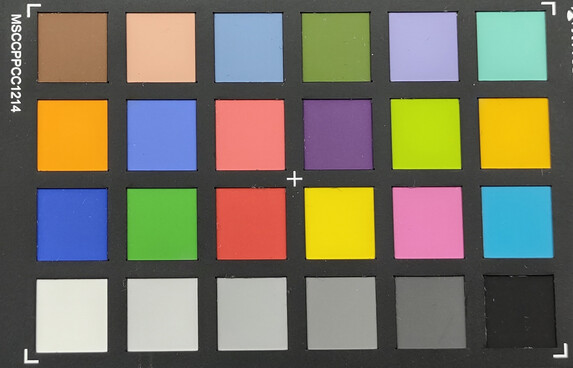
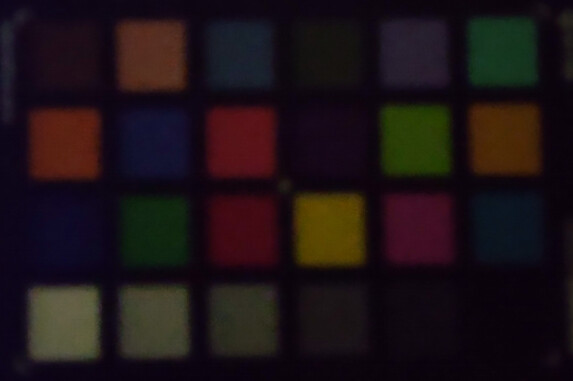
Accessories and Warranty – Large Selection of Available Accessories
The OnePlus Nord comes with a silicone bumper, a Warp Charge charger and the iconic red-white charging cable from OnePlus. A SIM tool can be found inside the package as well.
On OnePlus' online shop, there are numerous accessories available such as various cases, which OnePlus has commissioned a few creative minds to design. The case from JerryRigEverything for example simulates a look into the inside of the phone. The cases can be purchased for just under 30 Euros (~$35).
Many fans will also be glad to hear that the rough sandstone cases, which cost just under 20 Euros (~$23), have returned. A new charger will set you back around 30 Euros (~$35). Bundles with multiple accessories at a discount are once again available at the shop as well.
OnePlus offers a 24-month warranty, which as mentioned earlier and like the warranties of most manufacturers, does not cover water damage. In a warranty case in Europe, the device will be repaired in the Netherlands, which can take around 1-2 weeks from our experience. Outside of the warranty, the fixed prices are within the usual range.
Input Devices & Handling – Convincing 90-Hz Screen
A 90-Hz screen is great not just for smoother animations and movements on the display but also when it comes to the response times: The OnePlus Nord feels incredibly responsive and scrolling is buttery smooth. For a direct comparison, users can temporarily disable the 90-Hz refresh rate.
Similarly, the in-display fingerprint sensor works well: Since it is located in a convenient position, a thumb almost automatically lands on the spot with the sensor. After registering a stored fingerprint, the screen quickly unlocks. To prevent users from having to first press the standby button, the fingerprint sensor becomes active as soon as the smartphone is lifted.
Facial recognition is also available and works well in daylight. In the dark, the screen lights up to ensure that faces can still be recognized. When pressing the standby button, the front camera and with it the facial recognition immediately becomes active. In some cases, the standby screen is only shown for a fraction of a second before the smartphone is unlocked.
The fastest way to unlock the smartphone is enabling unlocking via both fingerprints and facial recognition.
Display – Could Be Slightly Brighter
With its extended Full HD resolution, the OnePlus Nord matches most devices in its price range. At the same time, however, a 90-Hz screen tends to be exclusive to more-expensive devices.
While the AMOLED display is relatively bright at an average brightness of 531 cd/m² with the ambient light sensor exposed to light, many similarly priced smartphones provide a slightly higher luminosity.
Since the display's illumination is relatively even, large color areas look homogenous.
| |||||||||||||||||||||||||
Brightness Distribution: 94 %
Center on Battery: 529 cd/m²
Contrast: ∞:1 (Black: 0 cd/m²)
ΔE ColorChecker Calman: 2.53 | ∀{0.5-29.43 Ø4.77}
ΔE Greyscale Calman: 1.7 | ∀{0.09-98 Ø5}
100% sRGB (Calman 2D)
Gamma: 2.249
CCT: 6462 K
| OnePlus Nord AMOLED, 2440x1080, 6.4" | Apple iPhone SE 2020 IPS, 1334x750, 4.7" | Huawei P40 Lite 5G IPS, 2400x1080, 6.5" | Samsung Galaxy S10 Lite Super AMOLED Plus, 2400x1080, 6.7" | Xiaomi Mi Note 10 AMOLED, 2340x1080, 6.5" | |
|---|---|---|---|---|---|
| Screen | 27% | -13% | -13% | -40% | |
| Brightness middle (cd/m²) | 529 | 688 30% | 466 -12% | 622 18% | 625 18% |
| Brightness (cd/m²) | 531 | 659 24% | 457 -14% | 630 19% | 607 14% |
| Brightness Distribution (%) | 94 | 92 -2% | 91 -3% | 96 2% | 89 -5% |
| Black Level * (cd/m²) | 0.28 | 0.61 | |||
| Colorchecker dE 2000 * | 2.53 | 1 60% | 2.2 13% | 2.7 -7% | 4.38 -73% |
| Colorchecker dE 2000 max. * | 4.52 | 2.2 51% | 4.6 -2% | 5.9 -31% | 6.83 -51% |
| Greyscale dE 2000 * | 1.7 | 1.7 -0% | 2.7 -59% | 3 -76% | 4.1 -141% |
| Gamma | 2.249 98% | 2.25 98% | 2.24 98% | 2.09 105% | 2.251 98% |
| CCT | 6462 101% | 6790 96% | 6633 98% | 6246 104% | 7251 90% |
| Contrast (:1) | 2457 | 764 |
* ... smaller is better
Screen Flickering / PWM (Pulse-Width Modulation)
| Screen flickering / PWM detected | 367.6 Hz | ||
The display backlight flickers at 367.6 Hz (worst case, e.g., utilizing PWM) . The frequency of 367.6 Hz is relatively high, so most users sensitive to PWM should not notice any flickering. However, there are reports that some users are still sensitive to PWM at 500 Hz and above, so be aware. In comparison: 53 % of all tested devices do not use PWM to dim the display. If PWM was detected, an average of 8084 (minimum: 5 - maximum: 343500) Hz was measured. | |||
Our tests with the CalMAN software reveal that the "natural" preset results in the most accurate grayscale and colors, while the factory settings provide a more vibrant visual experience.
While the color deviations are still slightly higher at the most accurate settings than those of the iPhone SE, they are barely visible to the naked eye and on par with other devices in this price range. We did not observe a blue tint.
The brightness is controlled via PWM and unlike on other OnePlus phones, DC dimming is not available as an experimental feature. As a result, users will have to contend with flickering with a frequency of approximately 368 Hz at brightness levels below 100%. Since the response times are fairly quick, the device is suitable for fast-paced games.
Display Response Times
| ↔ Response Time Black to White | ||
|---|---|---|
| 7 ms ... rise ↗ and fall ↘ combined | ↗ 3 ms rise | |
| ↘ 4 ms fall | ||
| The screen shows very fast response rates in our tests and should be very well suited for fast-paced gaming. In comparison, all tested devices range from 0.1 (minimum) to 240 (maximum) ms. » 20 % of all devices are better. This means that the measured response time is better than the average of all tested devices (20.2 ms). | ||
| ↔ Response Time 50% Grey to 80% Grey | ||
| 6 ms ... rise ↗ and fall ↘ combined | ↗ 3 ms rise | |
| ↘ 3 ms fall | ||
| The screen shows very fast response rates in our tests and should be very well suited for fast-paced gaming. In comparison, all tested devices range from 0.165 (minimum) to 636 (maximum) ms. » 17 % of all devices are better. This means that the measured response time is better than the average of all tested devices (31.6 ms). | ||
Performance – No Flagship SoC for the Nord
While the Snapdragon 765G, which OnePlus has chosen for the Nord, is a high-end SoC with a lot of performance, it cannot match the current top SoC Snapdragon 865 or even the Snapdragon 855 from last year. Although the performance difference can be seen quite clearly in our benchmarks at 30-60%, it will only become noticeable in practice when performing very demanding tasks or while working with many apps simultaneously.
The Snapdragon 765G is fairly powerful in its own right and thus sufficient for a smooth system performance and the vast majority of demanding apps. Relative to other devices in our comparison, the OnePlus Nord achieves average results and although this is fair for the price, the results in this category are not good enough by themselves to make the Nord a bargain.
| PCMark for Android | |
| Work performance score (sort by value) | |
| OnePlus Nord | |
| Huawei P40 Lite 5G | |
| Samsung Galaxy S10 Lite | |
| Xiaomi Mi Note 10 | |
| Average Qualcomm Snapdragon 765G (8687 - 11041, n=16) | |
| Work 2.0 performance score (sort by value) | |
| OnePlus Nord | |
| Huawei P40 Lite 5G | |
| Samsung Galaxy S10 Lite | |
| Xiaomi Mi Note 10 | |
| Average Qualcomm Snapdragon 765G (7245 - 9989, n=17) | |
| AnTuTu v8 - Total Score (sort by value) | |
| OnePlus Nord | |
| Apple iPhone SE 2020 | |
| Huawei P40 Lite 5G | |
| Samsung Galaxy S10 Lite | |
| Xiaomi Mi Note 10 | |
| Average Qualcomm Snapdragon 765G (285731 - 332305, n=14) | |
While the OnePlus Nord is not particularly fast when it comes to browsing the web, it still manages to keep up with other devices in its price range. There are delays when loading a web page and images in particular can incur additional loading times. Overall, web browsing with the OnePlus smartphone is still a reasonably fast experience.
| Jetstream 2 - 2.0 Total Score | |
| Average of class Smartphone (23.8 - 387, n=147, last 2 years) | |
| Apple iPhone SE 2020 (Safari Mobile 13.1) | |
| Samsung Galaxy S10 Lite (Chrome 80) | |
| OnePlus Nord (Chrome 84) | |
| Huawei P40 Lite 5G (Huawei Browser 10.0.2.331) | |
| Average Qualcomm Snapdragon 765G (15.8 - 60.5, n=12) | |
| Xiaomi Mi Note 10 (Chrome 78) | |
| JetStream 1.1 - Total Score | |
| Apple iPhone SE 2020 (Safari Mobile 13.1) | |
| Samsung Galaxy S10 Lite (Chrome 80) | |
| Huawei P40 Lite 5G (Huawei Browser 10.0.2.331) | |
| OnePlus Nord (Chrome 84) | |
| Average Qualcomm Snapdragon 765G (10.8 - 96.9, n=11) | |
| Xiaomi Mi Note 10 (Chrome 78) | |
| Speedometer 2.0 - Result 2.0 | |
| Average of class Smartphone (15.2 - 643, n=119, last 2 years) | |
| Apple iPhone SE 2020 (Safari Mobile 13.1) | |
| Samsung Galaxy S10 Lite (Chrome 80) | |
| OnePlus Nord (Chome 84) | |
| Huawei P40 Lite 5G (Huawei Browser 10.0.2.331) | |
| Average Qualcomm Snapdragon 765G (9 - 54.9, n=9) | |
| Xiaomi Mi Note 10 (Chrome 78) | |
| WebXPRT 3 - Overall | |
| Average of class Smartphone (38 - 380, n=30, last 2 years) | |
| Apple iPhone SE 2020 (Safari Mobile 13.1) | |
| Huawei P40 Lite 5G (Huawei Browser 10.0.2.331) | |
| OnePlus Nord (Chrome 84) | |
| Samsung Galaxy S10 Lite (Chrome 80) | |
| Xiaomi Mi Note 10 (Chrome 78) | |
| Average Qualcomm Snapdragon 765G (20 - 101, n=13) | |
| Octane V2 - Total Score | |
| Average of class Smartphone (2228 - 126661, n=194, last 2 years) | |
| Apple iPhone SE 2020 (Safari Mobile 13.1) | |
| Samsung Galaxy S10 Lite (Chrome 80) | |
| Huawei P40 Lite 5G (Huawei Browser 10.0.2.331) | |
| OnePlus Nord (Chrome 84) | |
| Average Qualcomm Snapdragon 765G (3592 - 19143, n=14) | |
| Xiaomi Mi Note 10 (Chrome 78) | |
| Mozilla Kraken 1.1 - Total | |
| Average Qualcomm Snapdragon 765G (2359 - 15230, n=14) | |
| OnePlus Nord (Chrome 84) | |
| Xiaomi Mi Note 10 (Chrome 78) | |
| Huawei P40 Lite 5G (Huawei Browser 10.0.2.331) | |
| Samsung Galaxy S10 Lite (Chrome 80) | |
| Average of class Smartphone (257 - 28190, n=154, last 2 years) | |
| Apple iPhone SE 2020 (Safari Mobile 13.1) | |
* ... smaller is better
The transfer speeds of the internal storage show the advantages of more-expensive flagship devices: The UFS 3.0 storage of the latter is simply much faster compared to the UFS 2.1 storage within the OnePlus Nord. That being said, the difference is only noticeable during daily use when transferring large amounts of data or loading more-demanding apps, which can take slightly longer on the OnePlus Nord.
| OnePlus Nord | Huawei P40 Lite 5G | Samsung Galaxy S10 Lite | Xiaomi Mi Note 10 | OnePlus 8 | Average 256 GB UFS 2.1 Flash | Average of class Smartphone | |
|---|---|---|---|---|---|---|---|
| AndroBench 3-5 | 22% | 46% | -25% | 76% | 9% | 198% | |
| Sequential Read 256KB (MB/s) | 956 | 905 -5% | 1489 56% | 480.5 -50% | 1707 79% | 829 ? -13% | 2235 ? 134% |
| Sequential Write 256KB (MB/s) | 473.1 | 188 -60% | 525 11% | 243.6 -49% | 748 58% | 376 ? -21% | 1871 ? 295% |
| Random Read 4KB (MB/s) | 126.7 | 146.1 15% | 191.7 51% | 106.2 -16% | 215 70% | 168.8 ? 33% | 297 ? 134% |
| Random Write 4KB (MB/s) | 104.5 | 249.7 139% | 173.5 66% | 118.9 14% | 203.9 95% | 143.6 ? 37% | 343 ? 228% |
| Sequential Read 256KB SDCard (MB/s) | 83.3 ? | 76 ? | 66.8 ? | ||||
| Sequential Write 256KB SDCard (MB/s) | 67.7 ? | 61 ? | 56.3 ? |
Gaming – Limited to 30 FPS
Our measurements with the software Gamebench show that our test device maintains a consistent 30 FPS both in the fast racing game Asphalt 9 and in PUBG Mobile. This applies to high and low settings. While being limited to 30 FPS in many games with the OnePlus Nord is acceptable, mobile gaming enthusiasts were likely expecting more.
Those who were hoping for snappy 90-FPS action due to the screen's specifications will be disappointed. Most manufacturers are currently limiting the frames rates in order to improve the battery life. Theoretically, it is possible to enable the 90-Hz mode for all applications from within OxygenOS, but this option is hidden by default, however. Users who want to tinker with their smartphone to get more frames can follow the instructions on this page.
Note: Since downloading the frame-rate graphs from Gamebench currently is not possible, we cannot display them here at this time. We will add them to this page as soon as the feature becomes available again.
Emissions – Warm but No Throttling
Temperature
The OnePlus Nord can become quite hot under full load: Up to 45.8 °C (114.44 °F) is a noticeable and potentially even uncomfortably high heat development. This is not an issue during idle, where the temperatures are significantly lower.
Occasionally when the phone is under heavy loads, a notification pops up indicating that since the smartphone is overheating, measures have been taken to reduce the temperatures. In this case, a few features such as the flashlight become temporarily unavailable. We did not notice any app crashes and after some time depending on the utilization of the smartphone, the features will become available again.
As the GFXBench battery test confirms, the OnePlus Nord does not throttle even when under a high, prolonged load.
(-) The maximum temperature on the upper side is 45.8 °C / 114 F, compared to the average of 35.2 °C / 95 F, ranging from 21.9 to 247 °C for the class Smartphone.
(±) The bottom heats up to a maximum of 43 °C / 109 F, compared to the average of 34 °C / 93 F
(+) In idle usage, the average temperature for the upper side is 27.9 °C / 82 F, compared to the device average of 32.9 °C / 91 F.
Speaker
The OnePlus Nord offers no stereo speakers, 3.5-mm headphone jack and the scope of delivery includes no USB-C to 3.5-mm jack adapter, either. However, connecting 3.5-mm headphones to the USB-C port via any halfway-decent adapter or using a USB-C headset results in a clear sound. The same holds true for the Bluetooth audio.
The integrated speaker can become fairly loud and its sound is quite balanced. Slight distortions at maximum volume are not a big issue, since the sound still sounds powerful and balanced at slightly lower volume levels. The audio experience is surprisingly pleasant for the price.
OnePlus Nord audio analysis
(+) | speakers can play relatively loud (84.9 dB)
Bass 100 - 315 Hz
(-) | nearly no bass - on average 74.7% lower than median
(+) | bass is linear (0% delta to prev. frequency)
Mids 400 - 2000 Hz
(-) | nearly no mids - on average 74.7% lower than median
(+) | mids are linear (0% delta to prev. frequency)
Highs 2 - 16 kHz
(-) | nearly no highs - on average 74.7% lower than median
(+) | highs are linear (0% delta to prev. frequency)
Overall 100 - 16.000 Hz
(-) | overall sound is not linear (113.3% difference to median)
Compared to same class
» 87% of all tested devices in this class were better, 2% similar, 11% worse
» The best had a delta of 11%, average was 35%, worst was 134%
Compared to all devices tested
» 96% of all tested devices were better, 1% similar, 3% worse
» The best had a delta of 4%, average was 24%, worst was 134%
Samsung Galaxy S10 Lite audio analysis
(+) | speakers can play relatively loud (88.9 dB)
Bass 100 - 315 Hz
(-) | nearly no bass - on average 30% lower than median
(±) | linearity of bass is average (11.4% delta to prev. frequency)
Mids 400 - 2000 Hz
(+) | balanced mids - only 3.4% away from median
(+) | mids are linear (3.9% delta to prev. frequency)
Highs 2 - 16 kHz
(±) | higher highs - on average 6.9% higher than median
(+) | highs are linear (4% delta to prev. frequency)
Overall 100 - 16.000 Hz
(±) | linearity of overall sound is average (22% difference to median)
Compared to same class
» 45% of all tested devices in this class were better, 7% similar, 48% worse
» The best had a delta of 11%, average was 35%, worst was 134%
Compared to all devices tested
» 63% of all tested devices were better, 6% similar, 31% worse
» The best had a delta of 4%, average was 24%, worst was 134%
Battery Life – High Stamina
Energy Consumption
The results of our energy consumption test are mixed: While it is not particularly economical under light loads, it draws less power than comparable devices under heavy loads.
As a result, the energy consumption during daily use, where the device is not stressed, is somewhat high.
| Off / Standby | |
| Idle | |
| Load |
|
Key:
min: | |
| OnePlus Nord 4115 mAh | Apple iPhone SE 2020 1822 mAh | Huawei P40 Lite 5G 4000 mAh | Samsung Galaxy S10 Lite 4500 mAh | Xiaomi Mi Note 10 5260 mAh | Average Qualcomm Snapdragon 765G | Average of class Smartphone | |
|---|---|---|---|---|---|---|---|
| Power Consumption | 37% | 5% | 9% | -4% | 6% | -22% | |
| Idle Minimum * (Watt) | 1.8 | 0.44 76% | 0.65 64% | 0.58 68% | 0.7 61% | 0.965 ? 46% | 0.847 ? 53% |
| Idle Average * (Watt) | 2.1 | 1.56 26% | 2.25 -7% | 1.55 26% | 1.8 14% | 1.899 ? 10% | 1.446 ? 31% |
| Idle Maximum * (Watt) | 2.3 | 1.63 29% | 2.29 -0% | 1.64 29% | 2.2 4% | 2.07 ? 10% | 1.63 ? 29% |
| Load Average * (Watt) | 3.4 | 2.32 32% | 3.7 -9% | 4.29 -26% | 5.2 -53% | 3.98 ? -17% | 6.95 ? -104% |
| Load Maximum * (Watt) | 5.2 | 4.12 21% | 6.46 -24% | 8.03 -54% | 7.5 -44% | 6.19 ? -19% | 11.3 ? -117% |
* ... smaller is better
Battery Life
In our Wi-Fi test with a standardized brightness of 150 nits, our test device lasts 14:29 hours. This is a decent result that the iPhone SE cannot beat and the Samsung Galaxy S10 Lite also falls short of by about 45 minutes. With normal use, it may very well be possible to get two workdays out of the device without having to recharge the battery.
Compared to the competition, the 4115-mAh battery only offers an average capacity for runtimes that, while they are not record-breaking, are still good overall. Thanks to Warp Charge 30T, which charges the phone at up to 30 watts, the OnePlus Nord can be fully recharged within one hour. After charging the device for a few minutes, it will have enough power for a few hours of normal use.
| OnePlus Nord 4115 mAh | Apple iPhone SE 2020 1822 mAh | Huawei P40 Lite 5G 4000 mAh | Samsung Galaxy S10 Lite 4500 mAh | Xiaomi Mi Note 10 5260 mAh | |
|---|---|---|---|---|---|
| Battery runtime | -26% | 21% | 4% | 30% | |
| Reader / Idle (h) | 33.4 | 32.3 -3% | 41.7 25% | 35.6 7% | |
| H.264 (h) | 17.7 | 11.4 -36% | 19.7 11% | 23.7 34% | |
| WiFi v1.3 (h) | 14.5 | 11.6 -20% | 17.5 21% | 13.7 -6% | 18.8 30% |
| Load (h) | 4.4 | 2.4 -45% | 3.7 -16% | 6.5 48% |
Pros
Cons
Verdict – OnePlus Delivers
In our review of the OnePlus One we wrote that it had an "outstanding price-performance ratio, which remains unmatched".
Now, five years later, the OnePlus Nord also has an excellent price-performance ratio, although it is no longer unmatched. This largely stems from the fact that older devices, which used to be more expensive such as the Samsung Galaxy S10 Lite, have now arrived at the OnePlus Nord's price range.
Considering the launch prices of other devices, the OnePlus Nord is certainly impressive: With 5G, fast Wi-Fi, a lot of storage, a fast SoC, good and flexible cameras as well as a sleek, robust case, it has set a new standard for future mid-range devices.
We barely have any criticisms: The screen could be slightly brighter, the camera only performs well in low-light situations when the nightscape mode is enabled, and the device can get rather warm.
The OnePlus Nord lives up to its own aspirations: With it, the manufacturer returns to its roots and sells a great smartphone at a cheap price.
Users who frequently use very demanding apps or multitask in the background while other demanding applications are running will be able to notice a performance disadvantage compared to more-expensive flagship phones. Furthermore, a few features commonly found on flagships such as wireless charging, Wi-Fi 6 or support for extremely high LTE speeds are missing.
However, it is still a great and inexpensive smartphone for anyone willing to accept these small compromises.
OnePlus Nord
- 08/31/2022 v7 (old)
Florian Schmitt


